50 Common Questions About Field Crops
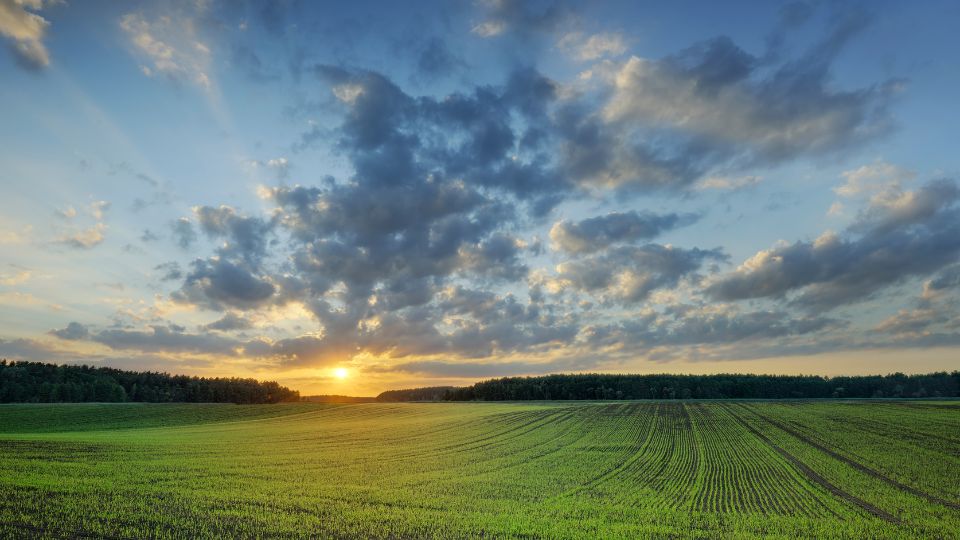 Introduction
Introduction
Utah State University (USU) Extension strives to provide research-based information and knowledge to help agricultural producers. Producers ofen have questions about several aspects of field crop prodution. This article is not comprehensive of all questions about field crops but represents some of the common questions that USU faculty have received from the public, producers, and crop advisors. Further questions should be directed to your local Extension agent or submited for expansion of this online resource.
Questions
Crop Selection Use
Irrigation and Water Use
Agronomy
Fertilizers and Soils
Weeds
Pests
Economics
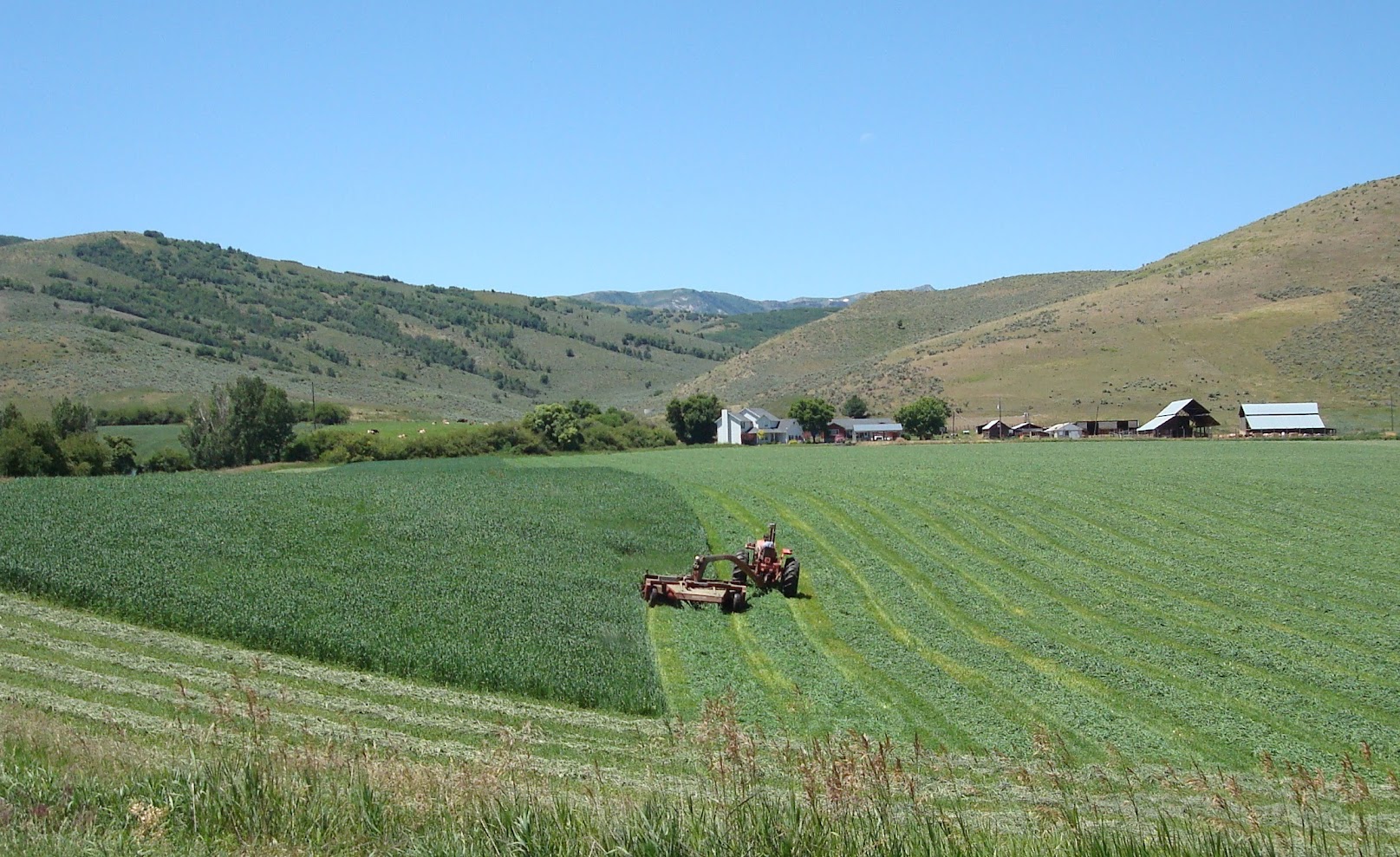
Crop Selection and Use
- Why is alfalfa grown in Utah, is it subsidized, and what benefits does it offer?
Alfalfa is known as the queen of forages because of its high biomass production, high feed value (i.e., high crude protein and digestible energy), resilient growth pattern, drought tolerance, and several other factors. The following fact sheet provides information on some major reasons why alfalfa has been widely grown in Utah and throughout the West: Ten Reasons Why Alfalfa Is Highly Suitable for the West (Yost et al., 2020).
There are many benefits of having the crop on a farm or ranch. Alfalfa and grass hay insurance programs are a recent offering for farmers—unlike corn and soybean insurance programs that have been around for decades. Learn more in this fact sheet titled Forage Production - Nebraska from the U.S. Department of Agriculture (USDA; Risk Management Agency, 2016). Alfalfa supports several pollinators, butterflies, beneficial insects, bird species, and many other insects and animals. For a more detailed description of the benefits to wildlife, begin reading on page 22 of the Alfalfa Wildlife & the Environment report from the National Alfalfa and Forage Alliance (Fernandez et al., 2019).
- Why is land used for alfalfa and hay production not converted to more vegetable and fruit production?
Several challenges make it difficult to transition from field to specialty crops. The primary challenge is finding a market for specialty crops like fruits and vegetables. Given the high risk and cost of large-scale fruit and vegetable production, many large growers secure contracts with processors before planting. These markets can be saturated or not available in Utah. Utah has a history of specialty crop production; however, the processors pulled out of Utah in favor of greater cost efficiency. Farm equipment and infrastructure are also a challenge. Specialized equipment is needed to plant and harvest specialty crops, and enclosed buildings are required for storing many specialized crops. Purchasing the equipment and infrastructure required for producing fruit and vegetable crops can be extremely costly and high risk. Finding labor for producing these crops can often be difficult as it requires specialized knowledge. Skilled laborers, usually brought to the U.S. on visas, are needed. This can be a complicated and expensive endeavor for those without experience. Growing fruits and 4 vegetables also requires a more specialized growing and regulatory (food safety) knowledge. Learn more from the AgTalk podcast from the Utah Department of Agriculture and Food (UDAF, 2023).
- What percent of crops grown in Utah are for direct human consumption?
Direct consumption can be defined in different ways. For this discussion, we are referring to crops that are consumed first by humans rather than animals.
- Most grain crops such as corn, wheat, and barley are used for livestock feed and human consumption, but the proportions vary by crop. Much of the barley (about 75% of U.S. barley acreage) is used for malting that is consumed by humans, with most of the remaining quarter used for animal feed.
- Most of the corn in Utah is grown as silage for livestock, and much of the corn grain grown is also used for livestock.
- Most of the wheat, and all the cherries and onions are consumed by humans, but each of these commodities is distributed as part of the national food supply chain.
- Alfalfa and grass are not directly consumed by humans, but the majority of these crops are consumed by livestock in Utah and surrounding states.
- Safflower grown in Utah is mainly sold for feed for birds and small animals, with some used for oil. Learn more in this fact sheet titled Growing Safflower in Utah (Pace et al., 2015).
Thus, the total percentage of Utah cropland used for direct human consumption is small (perhaps less than 5%) because alfalfa and hay are so dominant. Learn more about this topic in a recent USU factsheet: Agricultural Irrigated Land and Irrigation Water Use in Utah (Barker et al., 2022).
- Could sagebrush be used as a livestock feed to offset water used on irrigated cropland?
Sagebrush can provide winter forage for livestock. Sheep will graze sagebrush before cattle, but cattle can graze it if trained. Sagebrush is generally not the best option for livestock feed as it is very unpalatable, low in nutrition, and livestock will usually only eat it when there is nothing else for them to graze. There are much better crops to use as an alternative feed. Sagebrush is an important source of feed for wildlife such as deer and elk and is a habitat for many bird species. It also helps prevent overgrazing of grasses and monocultures. Forage production on range generally declines when sagebrush is absent. Learn more in this USU Extension factsheet: Should Ranchers Value Sagebrush? Why We Need Sagebrush (Burrit et al., 2014).

Irrigation and Water Use
- Do alfalfa roots go deeper with surface (flood) or sprinkler irrigation?
This question is interesting because alfalfa roots tend to grow deeper when they have a reason to do so. This is typically when the soil is not restrictive to root growth and when there is not a shallow water table. In some sprinkler irrigation systems, it is possible to irrigate with small, frequent irrigation applications. In these conditions, alfalfa roots do not need to grow deep to access water. Less frequent irrigation, common in many surface (flood) irrigation systems, promotes deeper root growth. However, there is a management balance between promoting root depth and being able to apply the proper amount of water at the proper time.
- How should management differ for dryland vs. irrigated pastures?
Forage plant selection, planting density, establishment timing, and harvest frequency are important differences between dryland and irrigated pasture development. In irrigated settings, a wider variety of plants may be used, including a mixture of cool and warm season species that will require a season-long water supply. Irrigation can support larger plant population densities than dryland. Developing a robust stand typically requires less time in irrigated settings than when relying on naturally available water. Dryland settings require less fertilizer as well because yield potential is generally lower (see Understanding Your Soil Test Report [Cardon et al., 2008] for more on soil test interpretation). For example, dryland alfalfa and grass hays are typically harvested once or twice per year compared to irrigated hays that are harvested 3 to 5 times per year.
- Why are farmers using inefficient and archaic surface (flood) irrigation systems?
Irrigation system selection depends on many factors, including economics, crop types, soils, water supply, and topography. Surface irrigation systems can be quite effective and can achieve some of the best irrigation efficiencies of any irrigation method. Farmers typically use these methods because they are most economical and work for their production systems and supply.
Surface irrigation systems can be quite effective and achieve some of the best irrigation efficiencies of any irrigation method.
- Level and border basin systems. The best examples of highly efficient surface (flood) irrigation systems include level and border basin systems created by leveling scrapers using laser leveling technology pulled by tractors. It is widely used in Millard County and some northern Utah counties with very flat topography, usually less than 1% slope. The efficiency of these systems is usually greater than 90%, which is much more efficient than many of the more expensive, very best mechanical irrigation systems that may be 60%–80% efficient.
- Furrow surface systems. Furrow surface irrigation systems deserve their inefficient reputation because they use smaller amounts of water that trickle down furrows for a day or longer to reach the field’s end. The result is typically excessive deep irrigation and deep leaching of soil nutrients at the top of the field and sometimes ponding or runoff at the bottom of the field, which can result in nutrient loss.
- Basin systems. Basin irrigation systems consist of very large amounts of irrigation water (5–10 cubic feet per second) applied for a few hours to relatively small areas (5–10 acres). Despite the application speed, it is not an appreciable source of soil erosion common with steeper fields irrigated by furrows. In basin irrigation systems, dikes or levees confine the water on both sides. The large amount of water moves across and down the field rapidly, reducing soaking time, which increases uniformity and efficiency. Strategically shutting off the surge of water before it reaches the field’s end allows the front of the flood water to coast to the bottom, thus eliminating the over-irrigation at the field’s top and bottom common in furrow irrigation. Borders and levies guide the water down the field in a uniform front because the field is level from side to side. The slope of the length of the field is often less than 1%. Conversion to mechanical systems on fields with flat topography is not only a less efficient water use but is much more expensive. Mechanical systems are much more irrigation efficient when fields have more slope, common in much of Utah and the Intermountain West and are typically expensive and a large investment for most producers.
- How much more water would reach the Great Salt Lake if all flood irrigation was converted to sprinklers?
Converting to sprinkler irrigation will likely have no impact on water consumption.
Sprinkler irrigation systems generally have greater consumptive use (evaporation and plant transpiration) than surface (furrow) irrigation, all else being equal. This means that converting to sprinkler irrigation will likely have no impact on water consumption. In some cases, consumption may increase with sprinklers. See this calculator that estimates water consumption differences when irrigation systems are changed: Irrigation Conversion Water Savings Destination Calculator (Yost et al., 2023). Therefore, if all furrow irrigation systems in the Great Salt Lake watershed were converted to sprinkler irrigation, there would potentially be negative effects on lake levels.
- Why is drip irrigation not required for crop production like in California?
First, California does not require drip irrigation on all irrigated land. Drip irrigation has the greatest potential application efficiency (amount of water applied that is available to the crop) of any irrigation method. However, there are many requirements of drip irrigation, including pressurization (usually requiring energy for pumping), filtration, maintenance, and significant upfront capital expense. Debris and sediment plugging filters and emitters, common in most irrigation water in Utah, requires expensive filtration systems and maintenance several times a day. Damage to underground drip lines from gophers and other rodents requires much hand labor to repair leaks and can render drip systems impractical on some fields with high rodent populations. The cost alone would be prohibitive for adopting drip on all irrigated land in Utah. There is no one "best" type of irrigation system for all conditions. See these tools for more information on comparing irrigation systems:
- Irrigation Technology Cost/Benefit Analysis Calculator (Yost et al., 2022).
- Irrigation Conversion Water Savings Destination Calculator (Yost et al., 2023).
- How much alfalfa is exported from Utah and what percent of the water used is “shipped overseas”?
The amount of alfalfa that is exported from Utah varies from year to year but has ranged from about 9%–22% over the last several years (2016–2022) based on data from the U.S. Census Bureau (Foreign Trade, 2024). Most of the exports are going to China. During that same period (2016–2022), 7%–16% of the alfalfa production was shipped to China, with the remainder of the 9%–22% being shipped to other countries.
The amount of diverted water that is shipped overseas is difficult to track. If you consider the U.S. Department of Agriculture – National Agricultural Statistics Service (USDA - NASS, 2024) data, which estimates 490,000 acres of alfalfa are harvested annually in Utah and about 850,000 acres of irrigated cropland (excluding safflower and about 40,000 acres of wheat that is dryland), then alfalfa represents about 58% of the irrigated cropland in Utah. Of that 58%, about 9%–22% is exported annually, so approximately 44,000–108,000 acres. If we assume that about 2.5 acre-feet of water is used per acre to produce that alfalfa, it could be up to 269,665 acre-feet of diverted water. Some of the water used to produce that alfalfa will stay in Utah (return f low, deep percolation into water tables, etc.), and alfalfa is dried to about 13% water content when it is sold. Therefore, the actual amount of water that leaves the state in alfalfa exports is much less than 269,665 acrefeet.
Compared to the efficiency and management of residential and municipal turf grass irrigation systems, the turf grass irrigation requirement for residential lawns, parks and golf courses is only 20% lower than that for alfalfa (see Crop and Wetland Consumptive Use and Open Water Surface Evaporation in Utah; [Hill et al., 2011]). Turf grass beautifies and has significant aesthetic value but makes no contribution to the food or feed supply in Utah. Learn more in this USU Extension factsheet: Agricultural Irrigated Land and Irrigation Water Use in Utah (Barker et al., 2022).
- When and where are some types of irrigation better than others?
This is hard to answer quickly because there are a lot of variations based on what you are comparing. Each system has its pros and cons and fits better than others in certain scenarios. See the Understanding Irrigation Water Optimization (Barker et al., 2023) fact sheet for more information.
The big three irrigation options are surface, sprinkler, and drip irrigation systems. Each type of system has various options within. When comparing systems, it is important to understand that the type of water loss and the potential of recovering that water is important, as discussed in this fact sheet: Irrigation Water Loss and Recovery in Utah (Crookston et al., 2022). An important feature when comparing systems is to examine the consumptive use of the system.
Consumptive use includes plant transpiration and any evaporation.
Consumptive use includes plant transpiration and any evaporation (from the soil surface, sprinkler droplets, water intercepted by plants, or water surfaces).
- Sprinkler irrigation tends to have the greatest consumptive use of common irrigation systems because water droplets can evaporate while in the air and sprinklers wet the crop canopy and soil surface.
- Surface (flood) irrigation wets much or all the soil surface, but not the canopy, and little water is typically evaporated from the ponded water itself. Consumptive use for surface irrigation is typically less than sprinkler irrigation, all else being equal.
- Drip irrigation wets little or none of the soil surface and does not wet the canopy. This is why drip irrigation typically has the least consumptive use of common irrigation systems, all else being equal.
- How do you measure seepage from canals?
Seepage from a canal is typically measured in one of two ways. The first method is using very careful measurements of the inflow and outflow of a canal reach with all turnouts closed and sealed. The difference between inflow and outflow is the seepage (or gain) in that reach. The second method is to use a ponding test. A section of the canal is dammed at both ends and all turnouts are closed and sealed. Water is added to the section and the water level is maintained. The water added to maintain the level is equal to seepage. This method is less practical due to the needed slope of the canal necessary for normal water flow.
- What crop should I grow if I only have water for a short season?
Cool-season crops and forages are typically best for short or early irrigation seasons in Utah. Small grains (wheat, barley, oats, triticale), for example, can be grown for grain or forage and require water in the early part of the season. Alfalfa is another cool-season crop option. Try alfalfa in a small area first to make sure that the stand density does not decline too rapidly from year to year because of the prolonged lack of irrigation. Alfalfa can be cut multiple times per year if full season irrigation is available,
Cool-season crops and forages are typically best for short or early irrigation seasons in Utah.
but if water is short, harvest one or two cuttings early in the season, and then irrigation can cease and alfalfa will go dormant for the remainder of the year. Alfalfa growth will resume the next season when water is applied.
- What is the best approach for deficit irrigation?
Deficit irrigation is described as any intentional irrigation that is less than the evapotranspiration demand for a crop. It can be beneficial to deficit irrigate some crops because it can increase crop quality and profits. However, for most crops, it will cause yield and economic loss. Different strategies exist for deficit irrigation and can include deficit irrigation all season or targeted deficit irrigation.
The targeted approach aims to apply less water during less critical growth stages and more water during critical growth periods (such as during tasseling and silking with corn). USU Extension researchers have conducted studies on these approaches in alfalfa, corn, small grain forages, and pasture and have found few differences in these approaches, except for cool-season pasture grass:
- Deficit Irrigation of Pastures (Yost et al., 2024).
- Strategies for Deficit Irrigation on Forage Crops (Yost, et al., 2021).
However, others have found benefits to targeted deficit irrigation, and it might be a desirable option if a deficit is necessary. Researchers in Colorado, Washington, and New Mexico have shown that alfalfa should receive full irrigation, if possible, until the supply is exhausted, then plants are allowed to go dormant for the rest of the growing season. This strategy maximizes yield on the earliest cuttings, which are typically the season’s highest yielding cuttings. Forcing alfalfa to go dormant from the lack of water has a less damaging effect on stand persistence than applying periodic limited water.
- What is the best approach to fallowing?
Fallowing is when irrigation is not applied for part of a growing season (split-season or partial fallowing) or the full season (full-season fallow or fallow). Split-season fallowing is often the best approach (if necessary) because it can allow for some crop to still be harvested. Researchers have shown that alfalfa should receive full irrigation and then be fallowed entirely (allowed to go dormant) when the water supply is exhausted. Fallowed alfalfa after the second cutting is the recommended strategy (see question number 14). Therefore, a farmer could irrigate through about June and get two cuttings and then shut the water off and “fallow” the alfalfa the rest of the season. Most of the alfalfa yield is obtained in the first two cuttings, and this approach could result in about ⅓ less water applied to the crop. Full-season fallow is also an option. If this is the case, then it is important to think about how to protect soil health, reduce erosion, and prevent weeds from spreading. Split-season fallowing of orchards or permanent crops, or a split-season fallow of a vegetable or grain crop sometimes does not work well because it might result in complete crop failure.

Agronomy
- Which grass(es) should I plant in my pasture?
Pasture species selection depends on many factors, including soil type, climate, precipitation, irrigation, elevation, and management goals. In irrigated Utah pastures, common species are tall fescue, meadow brome, and orchard grass. Tall fescue is usually the highest yielding and the most resilient grass but not as palatable as other options. Meadow brome and orchard grass work well in a mix. Cool-season grasses are almost exclusively planted in Utah. If a grower would like to add a legume to a grass pasture, alfalfa is most common but can cause bloat. Non-bloating options include birdsfoot trefoil, sanfoin, and cicer milkvetch. Planting recommendations for a broad range of irrigated and nonirrigated pastures can be found in the Intermountain Planting Guide (Jensen et al., 2001).
Nonirrigated or dryland limits selection to cool-season grasses, such as crested, Siberian, intermediate, Western bluebunch, or tall wheatgrass, Russian wildrye and Indian ricegrass. A fall or dormant seeding will help take advantage of early spring moisture for establishment. USU Extension has a guide for establishing and maintaining dryland pastures: Nonirrigated Pasture Establishment and Maintenance (Greenhalgh et al., 2008).
- What grass should I plant to have a good pasture if I have limited irrigation water?
Intermediate wheatgrass, tall wheatgrass, tall fescue, and smooth brome can be good choices in pastures with limited irrigation water in Utah. Though drought tolerant, these grasses do require adequate precipitation or some irrigation after seeding for establishment. Once these grasses are actively growing, and particularly once they begin to tiller, they can survive dry periods.
Variety selection is one of the most important decisions a grower can make.
Intermediate wheatgrass, tall wheatgrass, tall fescue, and smooth brome can be good choices in limited-irrigation pastures in Utah.
- How do new and old varieties of barley, wheat, and alfalfa compare?
Variety selection is one of the most important decisions a grower can make. It is critical to ensure the plant varieties are well adapted to the growing conditions in the region. Many land-grant universities (like USU) conduct research trials comparing new varieties to the old standards or check varieties commonly used in the state or region.
Before a plant breeder releases a new variety, they will evaluate the variety in multiple independent variety trials in the state and in surrounding states to evaluate its yields, disease resistance, protein, etc. When comparing new varieties to older ones, they replicate plots that are all treated the same way (irrigation, herbicides, insecticides, soil types, etc.) for direct comparisons between the old and new varieties. They will also have multiple-harvest years and multiple-harvest locations so you can see how the new varieties do when compared to the older ones across locations and years. Different locations and years are helpful to show how the variety compares to other varieties under different conditions and support the release of the new variety. Usually, most new varieties are better yielding, have better bread- or cracker-making qualities, have higher protein, much better disease resistance, etc. than the older varieties.
- How high should a swather be set when harvesting grass hay compared to alfalfa?
Generally speaking, cool-season grass hay will be more productive if the swather is set at 3 or 4 inches above the soil surface because the energy reserves are stored in the lower part of the stem and the basal leaves are needed to generate regrowth. Alfalfa can be cut by a swather at 1 to 2 inches because it will regenerate growth from energy stored in the root. Learn more in this article: Pasture and Grazing Management in the Northwest (Shewmaker & Bohle, 2010).
- Does planting direction make a difference in corn yields?
Studies have found that planting corn in a north-to-south direction rather than east-to-west can help increase the interception of sunlight into the leaf canopy. This can lead to more kernels per ear and larger kernels, which can contribute to higher yields. However, the benefits of north-south planting to yield have not been consistent in all studies, with several finding no influence of row direction or orientation on corn yield. This suggests that planting direction may have a minor influence on yield with slight and infrequent advantages of a north-south planting (Karlen & Kasperbauer, 1989; Buchart & Schmidhalter, 2022).
- How do I balance yield and quality for corn silage? Which has a larger overall effect on milk production per acre?
Balancing yield and quality for corn silage starts with carefully selecting corn hybrids. Choosing a hybrid that has a high digestibility will allow for the best quality silage. Further, those varieties with a relative maturity up to 10 days longer than full-season grain hybrids for your area can help boost silage yields. These hybrids often produce up to 2–4 tons/acre more than standard hybrids. Brown midrib hybrids tend to have a higher fiber digestibility, which can help increase milk production by several pounds per cow, but generally have much lower yields (Roth, 2001).
- What are the symptoms of planting corn too shallow?
The major symptom of corn planted too shallow is nodal roots at the soil surface rather than about an inch below the surface. Nodal roots provide the mineral nutrients and water the corn plant needs. Other problems include:
- Germination issues resulting in nonuniform stands.
- Compaction issues from presser wheels.
- Inadequate seed furrow closure, which can result in injury from pre-emergence herbicides.
Planting corn too shallow can lead to a variety of problems. Poor root development increases the likelihood of lodging. Planting deeper and scouting poor stands will help minimize this issue (Sandall & Jarvi, 2008). Corn should be planted to at least a 1.5-inch depth. You can go as deep as 2–3 inches to reach adequate soil moisture. Aim for a depth that will allow for uniform moisture availability across the field for more uniform germination.
- What’s the nutritional value of sorghum-sudangrass (Sudex), and how does it compare to other forages?
Sorghum and sudangrass hybrids (also known as Sudex) are a good option for forage. Like corn, they are warm season crops that prefer summer’s heat. They can be used for haylage, green chop, or pastures. Using them as a silage source can be effective as they have a feed value of about 80%–90% of the value of corn silage. Sudex is generally higher in protein than corn silage but lower in energy.
An inexpensive forage test to measure the residual prussic acid content is much lessn expensive than sick or dead livestock.
One concern with Sudex is prussic acid poisoning, and care is needed in harvest timing. Dhurrin, the compound that breaks down to release prussic acid is more prevalent in young plants. For this reason, the plants should not be grazed or harvested until the plants are 18–20 inches tall or for at least 10 days after a killing frost (Undersander, 2003). An inexpensive forage test to measure the residual prussic acid content is much less expensive than sick or dead livestock. Learn more from this guide: Sorghum-Sudangrass Production Guide (Boren et al., 2022).
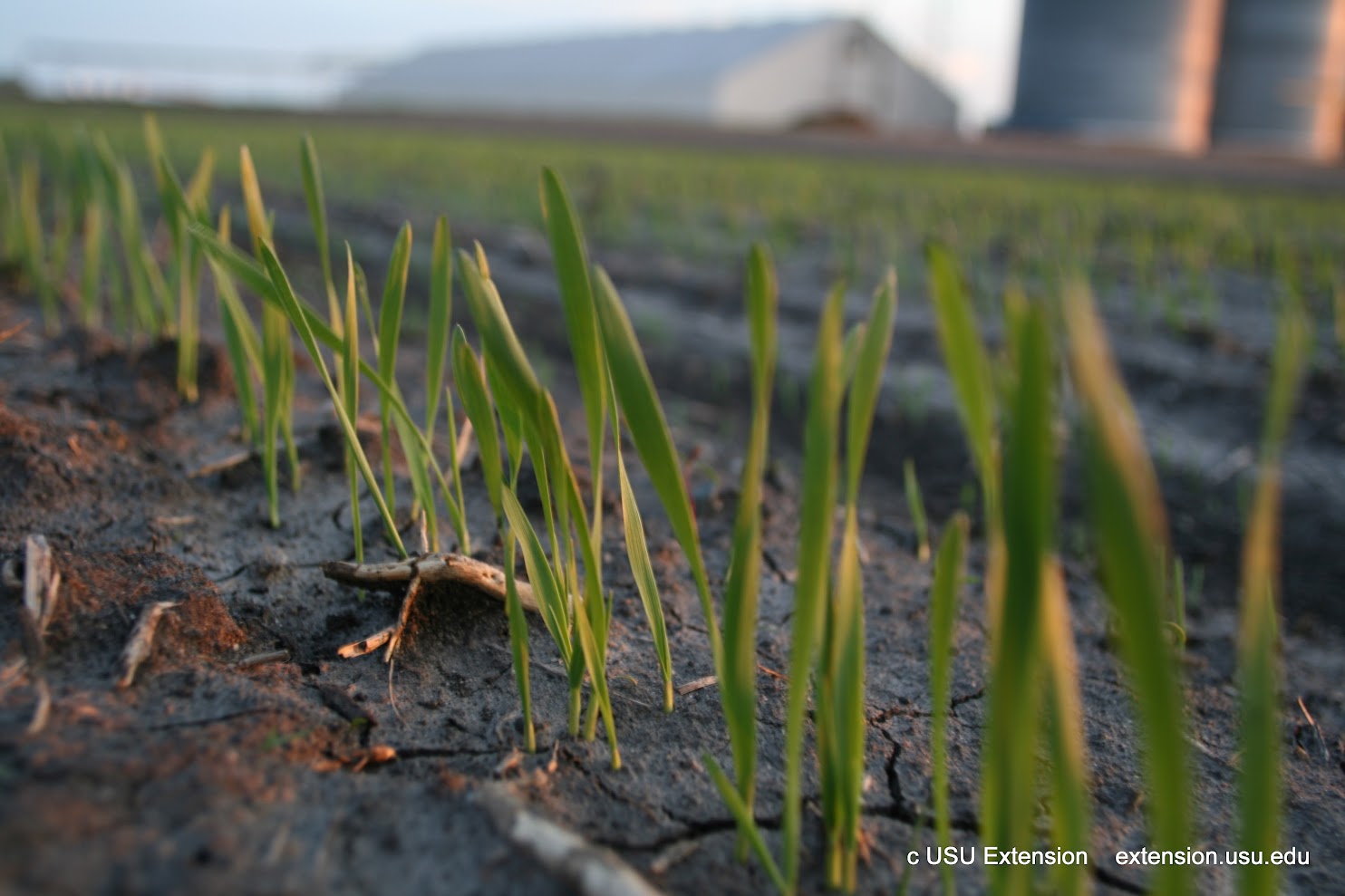
Fertilizers and Soils
- How often and when should I soil sample? Is once in a lifetime enough?
Most Extension services recommend soil testing fields every 3 to 5 years or when changing the crop to be grown in the field. This is because some nutrients are more easily applied to the soil and incorporated before planting the next crop. Another reason to take soil samples more frequently is if manure, compost, or other soil amendments have been applied to the field. An additional reason to sample more frequently is if you observe a certain area of the field is not growing as well as the rest or if there is a known problem area. You can also base how frequently to test soil on the value of the crop being grown and how closely it is managed. Taking soil tests in years when fertilizer prices are high can assist in deciding which fields need it the most that year and which ones can wait for an application the next year when prices may decrease.
It is important to remember that soil samples can be taken at any time during the year, but early spring after the frost is out of the soil or fall before the ground freezes is best for sampling soils in Utah. Keeping this in mind, test soil well before the next growing season and plan on getting the results from the soils lab about 2 weeks after they were submited. Learn more from this Extension guide: Soil Sampling Guide for Crops (Yost et al., 2023).
- Are there any easy and cheap soil biology tests that are relevant to producers?
Several existing and new soil tests are available from public and private laboratories. There are also simple tests that can be conducted in the field. For laboratory tests, a few of the least expensive available tests include:
- Soil respiration (about $30/sample – measures the total activity of the biology).
- Haney test (about $60/sample – includes respiration and available nitrogen and carbon with water extraction).
- In-field soil assessment from Utah Department of Agriculture and Food (UDAF) using this online form. This is a free assessment done by UDAF planners, and covers soil cover, residue breakdown, surface crust, ponding/infiltration, penetration resistance, water stable aggregates, soil structure, soil color, plant roots, biological diversity, and bio-pores. All these tests take about an hour to complete. Use these tests to estimate overall soil health in terms of compaction, soil organism habitat loss, soil organic mater depletion, and aggregate instability. Producers can also learn to perform these tests from the planners, conducting them whenever needed.
- What is the best approach for soil sampling and fertilizing a pasture that is only grazed and not cut for hay?
Pastures that have been grazed will generally require less fertilizer than pastures that are cut for hay because the livestock return 85% to 95% of the needed nutrients through urine and manure. If the pasture is not intensively grazed, most of the nutrients will be deposited by water troughs and shaded areas. Intensively grazed pastures will have a more uniform distribution of manure and urine. When sampling, it is beneficial to divide the pastures into two zones, with water trough and shaded areas being sampled and fertilized separately from the other areas of the pasture. Learn more in this University of Idaho publication: Pasture and Grazing Management in the Northwest (Shewmaker & Bohle, 2010).
- Is a single nitrogen application as effective as multiple applications for pasture?
Because most of our cool-season pasture grasses have a spring and fall peak in productivity (i.e., more growth in cooler conditions), and because N is most available for 6 to 8 weeks after application, spliting seasonal need for application in a perennial pasture setting has been shown to be effective at meeting N need at higher growth periods. The typical recommended split in Utah is half of the total seasonally required N applied in early spring, a third to a half in June, with any remainder in late August (see the fact sheet titled Fertilizer Management for Grass and Grass-Legume Mixtures [Koenig et al., 2002]).
- How do cover crops affect fertilizer needs?
It is important to remember that all plants (wheat, oats, barley, corn, alfalfa, and cover crops) will need nitrogen (N), phosphorus (P), and potassium (K) at different rates throughout the growing season. The idea of planting a cover crop is to have a crop to take up nutrients that might be lost during the fall and winter months when high amounts of precipitation occur and then terminate the cover crop before planting the cash crop the following year. The cover crop will then release the nutrients back into the soil to be used by the cash crop. Therefore, P and K fertilizer needs are often not influenced by cover crops as they are only cycling existing nutrients.
Cover crops release nutrients back into the soil for the cash crop to use, with most N being released between 4 and 10 weeks after cover crop termination.
Cover crops often affect N fertilizer needs. Researchers have shown the contribution of plant available nitrogen (PAN) from cover crops depends on when the cover crop is terminated, with most of the N being released between 4 and 10 weeks after cover crop termination. In general, legume cover crops like alfalfa and clover can provide up to 100 pounds of N, but often, it is in the range of 20–40 pounds of N per acre. The opposite can occur with a nonlegume cover crop, where residue can immobilize up to 50 pounds PAN per acre because it contains a high ratio of carbon to nitrogen.
- Can I sample corn plants at the end of the season to see how I did on my nitrogen management? If so, when and what part of the plant?
There is a test called the corn stalk nitrate test (CSNT) that was developed in the Midwestern U.S. that can be used to evaluate whether corn plants had sufficient nitrogen for maximum yield. Sampling protocols vary slightly, but most suggest that an 8- to 12-inch section of the stalk be cut from at least 15 plants dispersed throughout a field. These sections should be cut starting at 6–14 inches above the ground. The stalks can be sent to a lab for nitrate analysis. Nitrate levels below 250 ppm generally indicate that nitrogen was limited. Remember to use caution if water was limiting—this will cause low nitrate that was a result of water and not nitrogen stress. Also remember that this test is “after-the-fact” and may not be indicative of the need for nitrogen in coming years in that field. Learn more from this University of Nebraska - Lincoln post: Using a Cornstalk Nitrate Test to Evaluate Nitrogen Management Decisions (Milander et al., 2022). Keep in mind that in-season sampling may be more effective for directing nitrogen management.
- How do I tissue sample corn and use results to guide nitrogen fertilizer management?
Tissue testing provides a snapshot of the plant’s nutrient content at the time of sampling and helps make informed decisions such as whether to side-dress nitrogen to corn or apply in-season foliar nutrients. Tissue testing can aid with suspected nutrient deficiencies or reveal hidden nutrient stresses during the growing season to help increase corn yields.
Take samples from 16 to 20 randomly selected plants from the same field areas at roughly the same time of day as previously collected samples.
Growers can take multiple corn plant tissue samples throughout the growing season. Three common sampling stages include V4 or V5 (10 to 12 inches), between V9 and V12 (waist to shoulder high), and at tasseling or early R1 (silking). The later samplings are only effective if it is possible to apply late-season nitrogen through fertigation, highclearance applicators, or aerial applications. A sample should consist of a combination of at least 16 to 20 plants randomly selected from each field.
Testing should be done with the following procedures:
- Corn up to 12 inches tall: Sample the entire plant by cutting the entire stalk off an inch or so aboveground level.
- Corn that is between the waist and shoulder height: Sample the first fully developed leaf from the top.
- Corn that has tasseled: Sample the leaf below the top ear.
Samples should be taken from the same areas of the field at roughly the same time of day as previous samples were collected. University and private testing laboratories can provide more detailed instructions for proper sampling and shipping of plant samples.
- How do you distinguish zinc, iron, and sulfur deficiency in corn leaves?
Zinc, sulfur, and iron deficiencies look more like one another than when compared to other deficiencies.
- Sulfur deficiencies can be indicated by yellowing or yellow banding of the upper leaves giving the plant a lime-green appearance from a distance. Unlike nitrogen deficiency, which also causes a lime-green or yellowed appearance, sulfur is not very mobile in the plant, so new foliage will be the most affected by deficiency (symptoms of nitrogen deficiency begin in the oldest leaves).
- Zinc- and iron-deficient plants will also show symptoms on the newest growth first, which distinguishes them from magnesium-deficient plants that show symptoms on the lower leaves first. Iron deficiency is indicated by light green, yellow, or white intravenous banding on the leaves. The veins usually remain deep green at first. Zinc-deficient plants exhibit thick yellow or white bands between the green midrib and green leaf margins.
Referring to weather reports, soil test results, and fertilizer applications for the field can also be helpful. For zinc, pay close attention to zinc, pH, and phosphorus levels from soil test results and recent P applications. When zinc levels are marginal or low, high pH or phosphorus levels can make it difficult for the plant to uptake the zinc from the soil. Iron becomes less available when high-pH, calcareous soils experience cold and wet conditions. Sulfur is not affected by high pH, but sulfur may be less available in cold, dry soil because the weathering process is slowed. Finally, a tissue test may be used when soil tests, site conditions, plant symptoms, and other information do not provide a definitive answer.
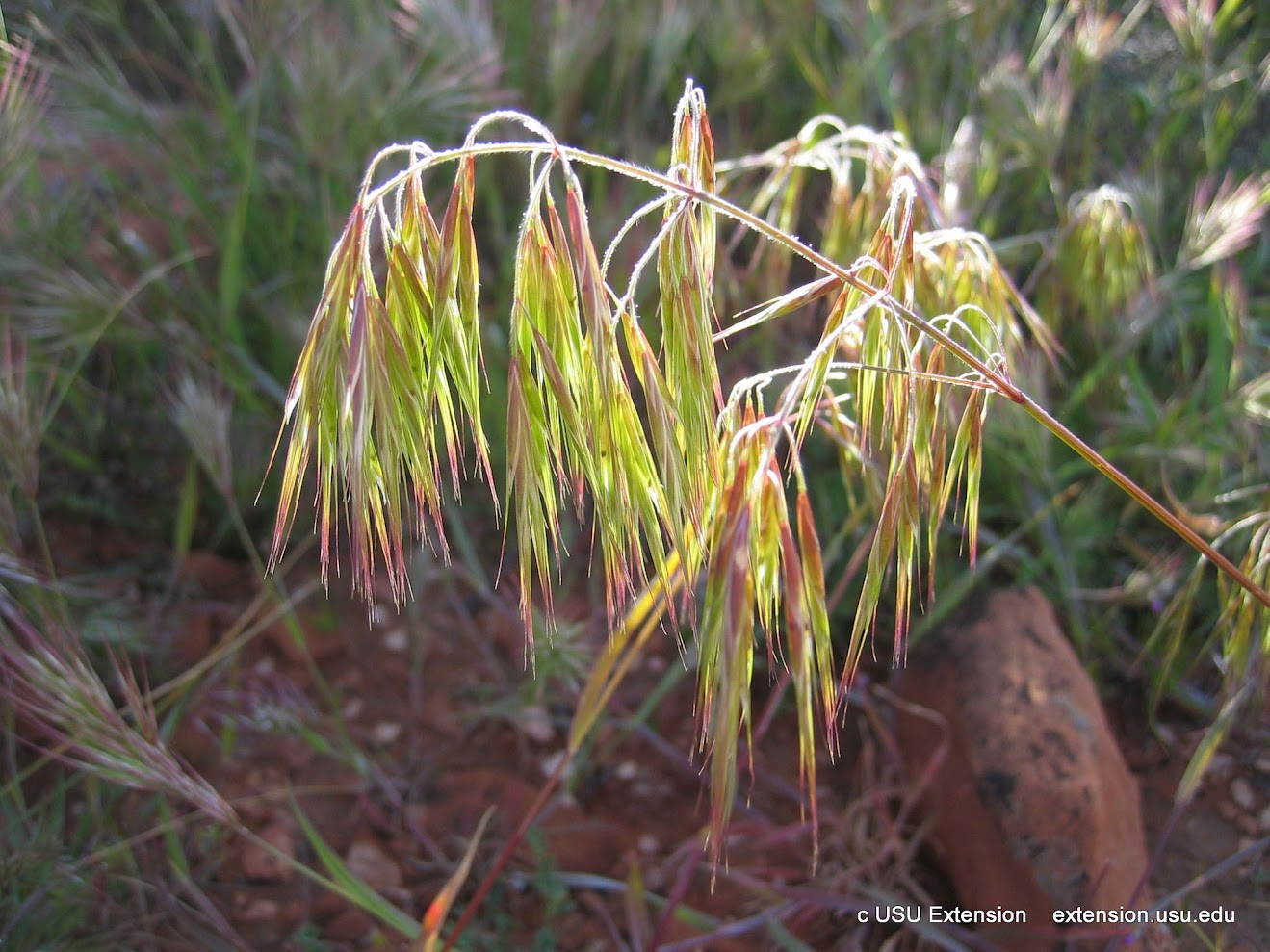
Weeds
- Will 32% nitrogen in the spray tank be as effective as ammonium sulfate (AMS) when conditioning water for spraying?
Different herbicide labels recommend different additives and adjuvants to maximize herbicide performance. When spraying herbicides with the active ingredient glyphosate (i.e., Roundup®), it is recommended that spray grade AMS be added to the tank at a rate of 8.5 to 17 pounds/100 gallons of total spray solution. AMS is added to counteract antagonism caused by ions (calcium, magnesium, potassium, iron, etc.) that are present in hard water. Other herbicide labels specifically recommend UAN (32% nitrogen) be added to the spray tank to increase activity.
- If I use AMS, do I still need to use a surfactant when spraying?
Yes. Ammonium sulfate (AMS) is added to the spray tank to overcome herbicide antagonism that is caused by hard water. A surfactant helps lower the surface tension of spray droplets, allowing beter retention of the herbicide on plant leaves and subsequent absorption into the plant. Both AMS and a surfactant are often needed to maximize herbicide effectiveness, especially for products containing glyphosate. You should always follow the adjuvant and additive recommendation on the label of the herbicide you are applying. Some herbicides (i.e., preemergence herbicides) may not recommend any adjuvants or additives.
- How do I control Canada thistle in alfalfa?
Canada thistle is very difficult to control in alfalfa. Consequently, it is critical that Canada thistle is controlled in the rotational crop before alfalfa is planted. In grass crops, such as corn and small grains, there are very effective herbicides for Canada thistle control, although multiple years of treatments may be necessary. In a healthy alfalfa stand, Canada thistle populations have been shown to decline in response to frequent cuttings, however, in a weak alfalfa stand, Canada thistle will likely continue to expand. With significant infestations of Canada thistle, we recommend rotating to a crop where Canada thistle can be effectively managed. If Canada thistle is expected to invade fields where new alfalfa stands are planted, it is recommended to plant Roundup Ready® alfalfa so that glyphosate can be used to suppress the Canada thistle. Nonchemical strategies like mowing, grazing, burning, flooding, and harrowing are not effective for Canada thistle control in alfalfa.
- How do I control annual kochia in alfalfa?
Kochia is generally most problematic during stand establishment and in thinning stands. There are several preemergence and postemergence herbicide options for controlling kochia in alfalfa. Some of these include pendimethalin (Prowl® H20), 2,4-DB, hexazinone (Velpar®), metribuzin (Sencor®), imazethapyr (Pursuit®), and carfentrazone-ethyl (Aim®). Labels for these products should be carefully read and understood to ensure proper application and usage.
- How do I control dodder in alfalfa?
Dodder is a parasitic plant that is dependent on host plants for its growth. It is orange in color because it does not create its own energy through photosynthesis as compared to most green plants, which contain chlorophyll that allows them to capture energy from the sun. Dodder seed is similar in size to alfalfa seed and is difficult to remove as a contaminant in alfalfa seed lots. Because of this, producers should always plant certified seed to prevent introducing dodder into their fields. In established alfalfa, pendimethalin (Prowl H2O) has been shown to suppress dodder germination.
Efforts to prevent dodder plants from producing seed include mowing or burning back alfalfa plants that have dodder atached to them. Preventing dodder seed production is important as dodder seeds can persist in the soil for decades. Dodder can be controlled in infested alfalfa seed fields with several herbicides. However, these herbicides are not labeled for use in forage alfalfa.
Preventing dodder seed production is important since dodder seeds can persist in the soil for years.
Therefore, it’s a good investment to buy “certified,” dodderseed-cleaned, noxious weed-free alfalfa seed when planting alfalfa. This ensures dodder and other “noxious” and nuisance weed seeds are not planted when the stand is established.
- What is the best way to get rid of foxtail in pasture?
There are many grasses referred to as “foxtail.” The summer annual grass, green foxtail, is generally not problematic in established pastures. Foxtail barley (Hordeum jubatum) is a short-lived perennial grass often found in areas of pastures with high salinity and/or seasonal flooding. There are few herbicide options for controlling foxtail barley, and removal with chemicals may not reduce the infestation very long as the underlying field condition favors the resurgence of the foxtail barley population. Planting salt-tolerant grass species, such as tall wheatgrass, has been an effective approach to reducing foxtail barley infestations. When possible, preventing seasonal water ponding can help with management. For infested areas in rangelands, pastures, and conservation reserve areas with less foxtails, a more selective herbicide like Canter R&P and Lambient™ are labeled to control some weedy foxtails in pastures and can be used to allow most forage grasses to survive (Filley, 2022). Canter R&P and Lambent are not labeled for use in alfalfa. Other less desirable methods include bare soil mechanical control or planting the area to a Roundup Ready crop such as corn.
Timing is critical when burning pastures to allow warm-season plants to thrive afterward.
- When should you burn fields to control weeds?
Fields should be burned before seed set or seed release and after the stubble has been dried enough to allow the fire to burn hot enough to kill seeds. Timing is also very critical when burning pastures. The best time to do this is generally late April to early May, which will allow the warm-season plants to thrive afterward. It is also important to do this under the supervision of local fire officials and to not burn on hot, dry, windy days (Anderson, 2009).Most counties require a burn permit issued from the local fire marshal office before burning.
- Is the herbicide picloram (Tordon 22K) effective at controlling woody plants?
Picloram (Tordon® 22K) is a restricted-use herbicide and should only be used by licensed applicators. It has been shown to be effective in controlling woody vegetation in rangeland, pastures, and other use sites included on the label. It should never be used in sites not included on the label or when desirable woody vegetation is growing near the woody plants that are being removed. As always, read, understand, and follow pesticide labels to ensure compliance. However, given the restricted nature of picloram, other herbicides (triclopyr, glyphosate, etc.) can be used effectively to control some woody plants.
- Is a wet mower more effective than herbicides on young Russian olive trees?
Wet blade mowers have generally not proven to be an effective method for multiyear control of Russian olive. Mechanical methods such as mowing, sawing, and pulling plants with an excavator can remove the aboveground biomass, but consider several factors. The trees will resprout from roots remaining below the surface. Spot spraying these shoots and young seedling Russian olives is effective using herbicides containing triclopyr as well as immediately treating the cut stumps with concentrated glyphosate or triclopyr according to the labels. We also advise applying herbicides, especially glyphosate, to saplings and shoots in late summer before the first hard freeze because more herbicide will be translocated to the roots. Cutting and removing large Russian olive trees without pretreating actively growing trees with leaves or freshly cut stumps in the fall or winter is not recommended. Further, the resprouting makes them much more difficult to control and requires multiple years. Treating cut stumps with concentrated glyphosate (greater or equal to 42% active ingredient) is generally the most effective and provides 90%–95% control from one application. Research and experience have demonstrated that treating freshly cut stumps with glyphosate is more effective than triclopyr because the glyphosate is more readily translocated throughout the root system, reducing root sprouting.
- Which pesticide will work to control larkspur?
The pesticide metsulfuron (Escort®, Cimarron®, MSM 60) is listed for controlling two different kinds of larkspur. Read the label to identify effective application rates, allowable treatment sites, and any application restrictions.
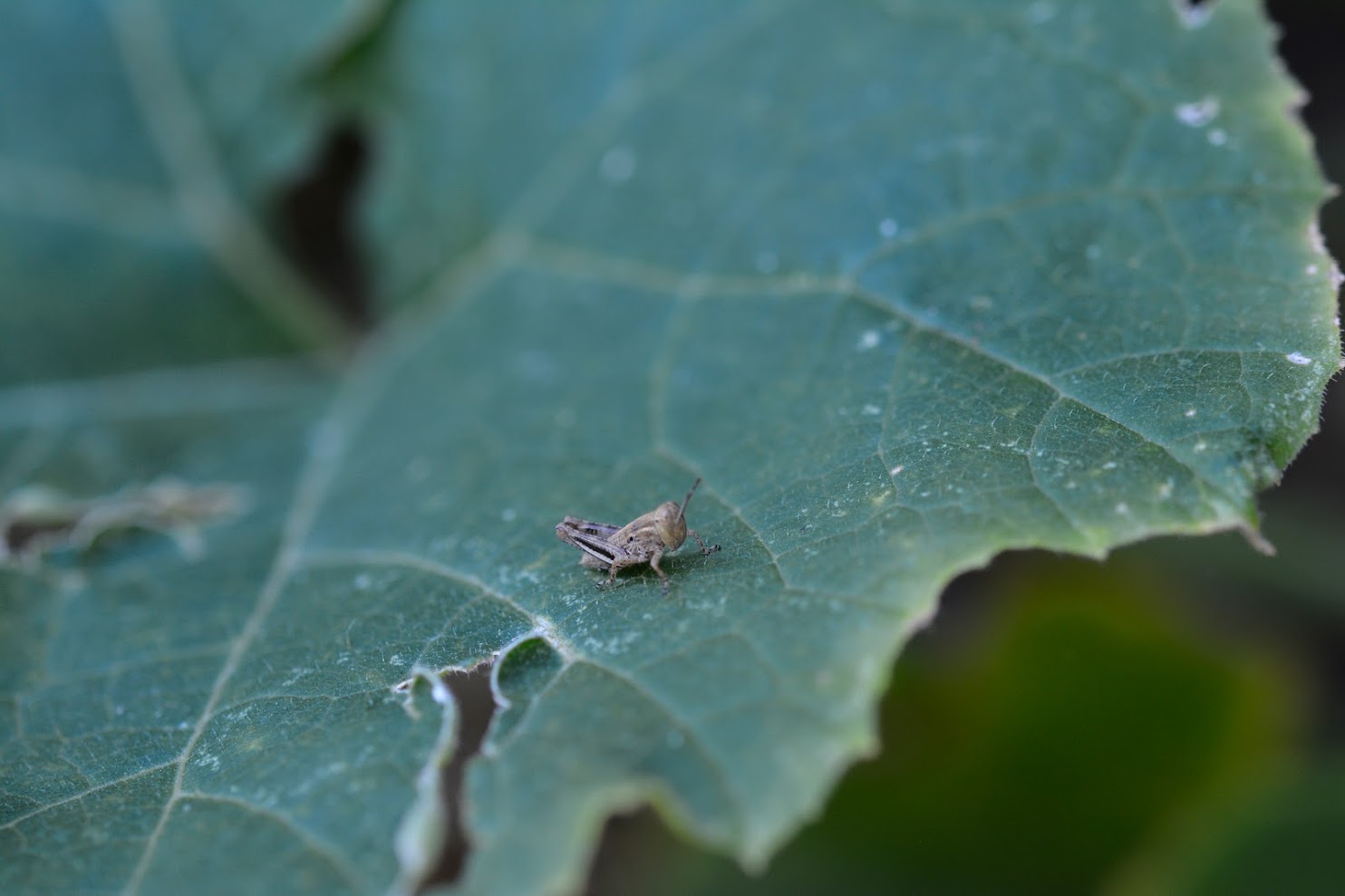
Pests
- What is the best way to control pocket gophers?
The best way to control pocket gophers for homeowners and those with small acreages is to use gopher traps. Trapping is a safe and effective method for controlling pocket gophers. Several types and brands of lethal gopher traps are available. The most common are two-pronged pincer traps, such as the Macabee, Cinch, or the stainless steel Gophinator, which the gopher triggers when it pushes against a flat, vertical pan or metal wire. USU research trials have shown that the Gophinator trap works best for catching gophers.
For large acreages, there are several different methods to apply poison bait into the burrows. These include using hand probes and mechanical burrow builders. Fumigants can also be used to control pocket gophers, including aluminum phosphide, gas cartridges, and pressurized carbon monoxide (PERK®). When using poisons or fumigants, especially those that are restricted-use products having deadly skull and cross bone images and danger wording on labels, it is very important to precisely follow label directions to prevent human exposure. Many of these products are not labeled for use in residential or small acreage situations due to proximity to homes and potential exposure to adults, children, and pets. The burrow builders and aluminum phosphide work best for farmers trying to control gophers on large acres. Treatment timing is critical—it is important to have plenty of moisture in the ground to help make good artificial burrows and activate the aluminum phosphide fumigant. For more information, see Pocket Gophers (Messmer, 1988).
- Is there a product for controlling June beetle and other grub-like larvae in grass and alfalfa to prevent crows from digging and damaging stands? When would you apply it?
Unfortunately, there are no chemical controls for white grub larvae in perennial pastures. Products labeled for grub control in turfgrass are not registered for agricultural use, meaning pasture or rangeland applications are contrary to the label and illegal. The best solution starts with prevention through proper fertility management, not overgrazing, and creating a healthy polyculture of appropriate grasses and forbs/legumes. Removing excessive ungrazed growth in the fall can help reduce grub overwintering survival. If damage is severe, overseeding may be needed to renovate thinned areas. Learn more about identifying grubs in this South Dakota State University article: Do You Have True Grubs in Your Pasture or Rangelands? (Varenhorst, 2021).
- What is the best way to control weevil in alfalfa?
Control starts with regular scouting. Spraying at a predetermined time, known as “calendar spraying,” is not recommended since pest lifecycle progression varies from year to year. Fields should be treated when action thresholds are met and the young larvae are most susceptible to control. Learn to scout fields with a sweep net in this USU Extension video: htps://youtu.be/hD6VxAQD96k and this USU Extension guide: htps://extension.usu.edu/crops/research/alfalfa-weevil. If it is 1-2 weeks away from harvest when weevil larvae are first observed, it is best to harvest early to reduce damage rather than spraying, which typically requires a two-week preharvest interval. Research and experience have demonstrated there are several insecticides including Steward that are effective at controlling this pest.
- What is the best way to control grasshoppers in alfalfa?
Chemical controls for grasshoppers must be timed early when the young nymphs are small (< ¼ inch). Scouting by sweep net or visual counts across the entire field should be used to monitor populations. Do not limit scouting to field edges where grasshoppers may congregate. The action threshold is 15–20 nymphs per square yard before it “pays to spray.” Treating small fields surrounded by larger fields or pasture/range with high populations, or treating in a patchwork, will not be productive. Grasshoppers are highly mobile. Therefore, farmers working together to treat larger acreages will produce the best results.
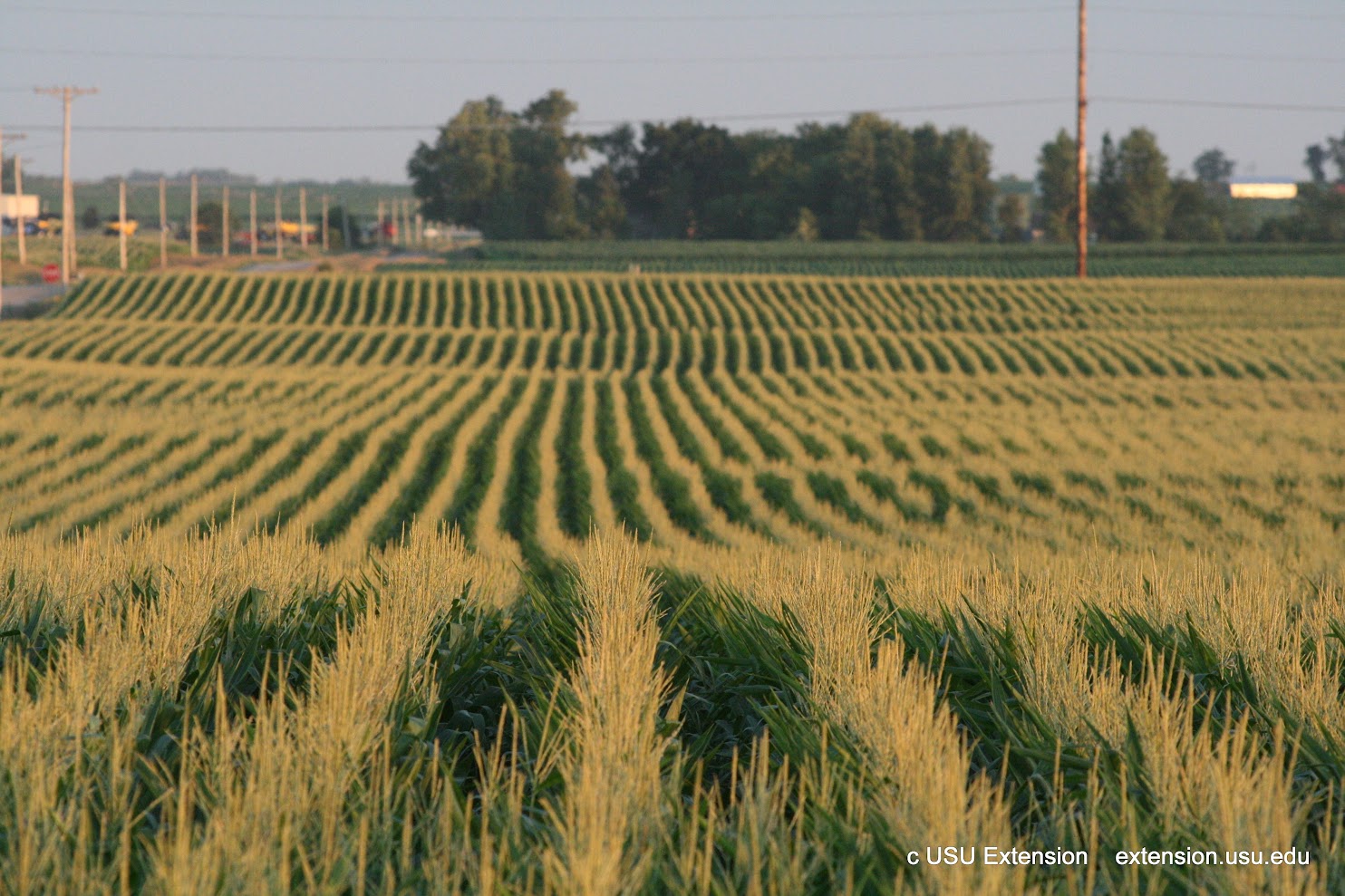
Economics
- How do I estimate crop loss due to wildlife depredatition?
An effective method for estimating crop loss from wildlife depredation is to set up a protected site near an unprotected site and measure the differences between the two areas. This will allow you to understand how much damage has occurred from depredation and estimate the losses from that damage (Austin, 1998). A relatively easy and effective method of creating a protected area is to install two to four small areas (about 75–100 square feet each) of physical enclosure in the affected area (fields or rangeland) before wildlife grazing begins. Make an inexpensive square enclosure from tee posts for corners and net wire between or from catle panels in affected portions of the field or rangeland. The enclosures must be at least 6 feet high to exclude deer. The forage yield differences between the protected vs. the exposed areas can be determined by hand clipping and weighing a couple of even smaller areas of 3 to 4 square feet each inside the enclosure and repeating it outside to compare the differences.
- How does the cost of producing sorghum-sudangrass (Sudex) compare to corn silage?
Many factors should be considered when determining which crops to produce. Sorghum-sudangrass or Sudex can be a great option for forage production. Some of the advantages of replacing corn silage with Sudex include less expensive seed costs, faster establishment, beter growth in hot and dry weather, and greater disease and pest tolerance in some situations. The cost of planting corn silage is about $130 per acre when assuming 35,000 seeds per acre and $300 per bag of 80,000 seeds. Sudex costs about $20 per acre, assuming a planting rate of 25 pounds per acre and $0.80 per pound of seed. Thus, establishment costs of Sudex are about 15% of the cost of planting corn. Another advantage of Sudex is that it is planted with a drill, which is amenable to forage/hay producers without a corn planter. Sudex in Utah research trials has yielded up to approximately 10 tons per acre. This is about one-third of the yield that corn silage can produce (nearly 30 tons per acre). Consider all other production costs and forage needs when deciding which to grow. Sudex often has a higher percentage of crude protein, less starch, and lower total digestible nutrients than corn silage. Learn more about Sudex in this USU Extension fact sheet: Sorghum-Sudangrass Production Guide (Boren et al., 2022).
- Is there an economical way to acidify soils?
The short answer is no. Here is why: Utah soils contain excess lime or calcium carbonate (the range is generally 15% to 40% by weight), so our soils have a pH of 7.5 to 8.0 in equilibrium with that carbonate. When in the presence of acid, calcium carbonate dissolves and releases hydroxides, which immediately combine with the acid (hydrogen ions) to form water, thereby preventing any pH reduction. All the excess lime in a soil would have to be dissolved for the pH of the bulk soil to begin to be acidified. The problem, therefore, is one of scale. One percent by weight of an acre-foot of soil (a 1-foot-deep slice of an acre of land) weighs about 40,000 pounds, or 20 tons. Utah soils (and most soils in the western U.S.) are 10%–40% lime. Simple multiplication brings the scale of the issue into focus. Trying to acidify soils that contain an excess of calcium carbonate is, therefore, a nonstarter. It is best to choose crop types and varieties that tolerate alkaline soils and manage fertilizer formulations and rates that account for our soil chemistry. For more information, see the following:
- Why Are My Soils So Alkaline? Can I Lower My Soil’s pH? (Cardon, n.d.).
- Managing Soil pH for Crop Production in Calcareous-Alkaline Soil (Gale et al., 2023).
- How much of Utah’s irrigated farmland is owned by international companies?
This is a difficult question to answer because there is litle public, statewide data collected on ownership origin. The USDA does not track whether landowners are domestic or international. The simple answer is that international ownership is a minority of the acreage in Utah. Most irrigated land in Utah is owned by Utah farmers and residents. There are nearly 1.2 million acres of irrigated land in Utah and this land is split among about 13,000 farms (USDA-NASS, 2023). Learn more about land use and irrigation in Utah in this USU Extension fact sheet: Agricultural Irrigated Land and Irrigation Water Use in Utah (Barker, 2022).
- Does harrowing a pasture at the end of the year make sense economically?
Deciding to harrow a pasture at the end of the year depends on many factors. Two of the main reasons to harrow a pasture are to break up the soil surface to incorporate seed into the soil for increased pasture forage density and to break up and incorporate manure pile residuals left on the pasture surface. Another reason is to flatten dead grass and vegetation left from the previous growing season.
Harrowing can help disperse manure piles, distributing the nutrients more uniformly throughout the pasture and speeding up manure decomposition, thereby reducing fertilizer needs.
The reasons to harrow can make economic sense due to the cost of fuel, equipment, and fertilizer. Harrowing is a small, light and fast-moving piece of machinery and can be pulled with an ATV or small tractor to incorporate seed as opposed to an expensive, heavy no-till drill. When livestock graze pastures, a large portion of the nutrients they consume (85%–90%) are returned to the pasture through urine and dung deposition (Shewmaker and Bohle, 2010). Due to the organic material in manure, manure piles take time to break down into plant usable nutrients. Harrowing can help disperse the manure piles, distributing the nutrients more uniformly throughout the pasture and speeding up the decomposition of the manure pile. Harrowing in this case can be economical due to the beter distribution of nutrients in the manure, thereby reducing the need for fertilizer applications.
Photo Credit
All photos were provided by USU Extension.
References
- Agricultural Marketing Resource Center. (2022). Barley profile. Iowa State University. htps://www.agmrc.org/commodities-products/grainsoilseeds/barleyprofile#:~:text=In%20the%20U.S.%2C%20about%20three,also%20grown%20as%20a%20forage.
- Anderson, B. (2009). Using prescribed burning in pasture management [Fact sheet]. University of Nebraska Institute of Agriculture and Natural Resources Cropwatch. htps://cropwatch.unl.edu/using-prescribedburning-pasture-management.
- Austin, D. D., Urness, P. J., & Duersch, D. (1998). Alfalfa crop loss due to mule deer depredation. Journal of Range Management, 51(1), 29–31. htps://doi.org/10.2307/4003559.
- Barker, B., Gale, J., Nelson, M., & Yost, M. (2023). Understanding irrigation water optimization [Fact sheet]. Utah State University Extension. htps://extension.usu.edu/irrigation/research/understanding-irrigationwater-optimization.
- Barker, B., Yost, M., & Zesiger, C. (2022). Agricultural irrigated land and irrigation water use in Utah [Fact sheet]. Utah State University Extension. htps://extension.usu.edu/irrigation/research/agriculturalirrigated-land-and-water-use.
- Boren, D., Yost, M., Johnson, L., Sullivan, T., Creech, E., Cardon, G., Ransom, C., Violet, R., Reid, C., Zesiger, C., Taylor, K., Hadfield, J., Pace, M., & Gale, J. (2022). Sorghum-sudangrass production guide [Fact sheet]. Utah State University Extension. htps://digitalcommons.usu.edu/extension_curall/2294/.
- Burrit, B., Monaco, T., & Thacker, E. (2014). Should ranchers value sagebrush? Why we need sagebrush [Fact sheet]. Utah State University Extension. htps://digitalcommons.usu.edu/extension_curall/794/
- Buchhart, C., & Schmidhalter, U. (2022). Daytime and seasonal reflectance of maize grown in varying compass directions. Frontiers in Plant Science, 13. htps://www.frontiersin.org/journals/plantscience/articles/10.3389/fpls.2022.1029612.
- Cardon, G. (2022). Why are my soils so alkaline? Can I lower my soil’s pH? [Blog post]. Dirt Diggers Digest, Utah State University Extension. htps://extension.usu.edu/dirtdiggersdigest/soils-alkaline.
- Cardon, G. E., Kotuby-Amacher, J., Hole, P., & Koenig, R. (2008). Understanding your soil test report [Fact sheet]. Utah State University Extension. htps://digitalcommons.usu.edu/cgi/viewcontent.cgi?article=1825&context=extension_curall.
- Crookston, B., Peters, T., Yost, M., & Barker, B. (2022). Irrigation water loss and recovery in Utah [Fact sheet]. Utah State University Extension. htps://extension.usu.edu/crops/research/irrigation-water-loss-andrecovery.
- Fernandez, A., Sheaffer, C., Tautges, N., Putnam, D., & Hunter, M. (2019). Alfalfa, wildlife and the environment. [Fact sheet]. National Alfalfa and Forage Alliance. htps://www.alfalfa.org/pdf/alfalfaenvironment2.pdf.
- Filley, S. (2022). Foxtail control in pastures and hay ground [Fact sheet]. Oregon State University Extension Service. htps://extension.oregonstate.edu/crop-production/pastures-forages/foxtail-control-pastureshayground#:~:text=Small%20infestations%20of%20foxtail%20should,and%20rest%20during%20summer% 20heat.
- Foreign Trade. (2024). State and metropolitan area trade data. U.S. Census Bureau. htps://www.census.gov/foreign-trade/statistics/state/index.html
- Gale, J., Koenig, R., & Barhnill, J., (2001) and revised by Zesiger, C., Gale, J., Yost, M., & Cardon, G. (2023). Managing soil pH for crop production in calcareous-alkaline soil [Fact sheet]. Utah State University Extension. htps://digitalcommons.usu.edu/cgi/viewcontent.cgi?article=1922&context=extension_curall
- Greenhalgh, L., Davenport, B., & Horton, H. (2008). Non-irrigated pasture establishment and maintenance [Fact sheet]. Utah State University Extension. htps://digitalcommons.usu.edu/cgi/viewcontent.cgi?article=2349&context=extension_curall
- Goodrich, K. (2012). Pasture fertilization [Fact sheet]. USDA-Natural Resource Conservation Service. htps://www.nrcs.usda.gov/sites/default/files/2022-09/Pasture-Fertilization.pdf.
- Hill, B., Barker, B., & Lewis, C. (2011). Crop and wetland consumptive use and open water surface evaporation in Utah [Fact sheet]. htps://extension.usu.edu/irrigation/files/Crop_and_Wetland_Water_Use_Hill_Baker_Lewis.pdf.
- James, D. W., & Topper, K. F. (2010). Utah fertilizer guide. Utah State University Extension. htps://extension.usu.edu/agwastemanagement/files/Utah_Fertilizer_Guide.pdf.
- Jensen, K., Horton, H., Reed, R., & Whitesides, R. (2001). Intermountain planting guide [AG 510 guide]. USDA Agricultural Research Service and Utah State University Extension. htps://digitalcommons.usu.edu/cgi/viewcontent.cgi?article=2332&context=extension_curall.
- Johanns, A., & Plastina, A. (2023). Historical costs of crop production. Iowa State University Extension Ag Decision Maker. htps://www.extension.iastate.edu/agdm/crops/pdf/a1-21.pdf.
- Karlen, D. L., & Kasperbauer, M. J. (1989). Row orientation and configuration effects on canopy light spectra and corn growth. USDA-Agricultural Research Service. htps://www.ars.usda.gov/ARSUserFiles/60820000/Manuscripts/1985-1990/Man233.pdf.
- Koenig, R., Nelson, M., Barnhill, J., & Miner, D. (2002). Fertilizer management for grass and grass-legume mixtures [Fact sheet]. Utah State University Extension. htps://digitalcommons.usu.edu/extension_histall/9.
- Lee, R. D., Baker, R. D., & Ball, S. T. (2017). Managing weeds in alfalfa [Guide A-324]. New Mexico State University. htps://pubs.nmsu.edu/_a/A325/index.html.
- Medlin, C. R., & Siegilin, S. D. (2001). Weed management in alfalfa stands [Fact sheet]. Purdue University Extension. htps://www.extension.purdue.edu/extmedia/BP/WS-11-W.pdf.
- Messmer, T. (1988). Pocket gophers [Fact sheet]. North Dakota State University Extension.
- Milander, J., Iqbal, J., Mamo, M., & Timmerman, A. (2022). Using a cornstalk nitrate test to evaluate nitrogen management decisions. University of Nebraska – Lincoln. htps://cropwatch.unl.edu/2022/using-cornstalknitrate-test-evaluate-nitrogen-management-decisions
- Murray, M. (2020). Community wide grasshopper control [Fact sheet]. Utah State University Extension. htps://extension.usu.edu/pests/research/community-wide-grasshopper-control.
- Pace, M. G., Israelsen, C. E., Creech, E., & Allen, N. (2015). Growing safflower in Utah [Fact sheet]. Utah State University Extension. htps://extension.usu.edu/crops/research/safflower-in-utah
- Risk Management Agency. (2016). Forage production Nebraska. U.S. Department of Agriculture. htps://rma.usda.gov/en/Fact-Sheets/Topeka-KS-Region-Fact-Sheets/Forage-Production-2017-NE
- Roth, G. W., & Heinrichs, A. J. (2001). Corn silage production and management [Fact sheet]. PennState Extension. htps://extension.psu.edu/corn-silage-production-and-management.
- Sandall, L., Jasa, P., & Jarvi, K. (2008). Shallow planting can contribute to larger problems [Fact sheet]. University of Nebraska Institute of Agriculture and Natural Resources Cropwatch. htps://cropwatch.unl.edu/shallow-planting-can-contribute-larger-problems.
- Shewmaker, G., & Bohle, M. G. (2010). Pasture and grazing management in the northwest [Publication 614]. University of Idaho and Pacific Northwest Extension. htps://www.lib.uidaho.edu/digital/rangecoll/items/rangecoll54.html.
- Undersander, D. (2003). Sorghums, sudangrasses, and sorghum-sudan hybrids. University of Wisconsin Focus on Forage, 5(5). htps://fyi.extension.wisc.edu/forage/files/2014/01/SorghumsFOF.pdf.
- Undersander, D., Cosgrove, D., Cullen, E., Grau, C., Rice, M. E., Renz, M., Sheaffer, C., Shewmaker, G., & Sulc, M. (2011). Alfalfa management guide. American Society of Agronomy, Crop Science Society of America, and Soil Science of America. htps://www.agronomy.org/files/publications/alfalfa-management-guide.pdf.
- Utah Department of Agriculture and Food (UDAF). (2023). The truth about alfalfa [Podcast]. AgTalk. htps://agtalk.libsyn.com/the-truth-about-alflafa
- U.S. Department of Agriculture – National Agricultural Statistics Service (USDA – NASS). (2024). 2023 state agriculture overview. htps://www.nass.usda.gov/Quick_Stats/Ag_Overview/stateOverview.php?state=UTAH
- Varenhorst, A. (2021). Do you have true white grubs in your pasture or rangeland? South Dakota State University Extension. htps://extension.sdstate.edu/do-you-have-true-white-grubs-your-pasture-orrangeland
- Wilson, R., & Orloff, S. (2006). Controlling weeds in grass hay and alfalfa-grass mixtures. In Western Alfalfa Conference Proceedings, University of California Cooperative Extension. htps://alfalfasymposium.ucdavis.edu/+symposium/proceedings/2006/06-95.Pdf.
- Wiscomb, G. W. & Messmer, T. A. (1998). Pocket gophers [Fact sheet]. Utah State University Extension. htps://digitalcommons.usu.edu/cgi/viewcontent.cgi?article=2023&context=extension_histall.
- Yost, M., Allen, N., Creech, E., Putnam, D., Gale, J., & Shewmaker, G. (2020). Ten reasons why alfalfa is highly suitable for the West [Fact sheet]. Utah State University Extension. htps://extension.usu.edu/crops/research/ten-reasons-why-alfalfa-is-highly-suitable-for-the-west
- Yost, M., Anderson, C., Allen, N., Barker, B., Heaton, M., Clawson, J., & Creech, E. (2024). Deficit irrigation of pastures [Fact sheet]. Utah State University Extension. htps://extension.usu.edu/crops/research/deficitirrigation-of-pastures
- Yost, M., Barker, B., & Peters, T. (2023). Irrigation conversion water savings destination calculator. Utah State University Extension. htps://extension.usu.edu/crops/tools/conversion-calculator
- Yost, M., Barker, B., & Peters, T. (2022). Irrigation technology cost/benefit analysis calculator. Utah State University Extension. htps://extension.usu.edu/crops/tools/irrigation-technology-cost-benefit-calculator
- Yost, M. Cardon, G., Baker, M., Gale, J., Creech, E., Pace, M., Taylor, K., Zesiger, C., Evans, T., & Miller, R. (2023). Soil sampling guide for crops [Fact sheet]. Utah State University Extension. htps://extension.usu.edu/crops/research/soil-sampling-guide-for-crops
- Yost, M., Sullivan, T., Allen, N., Kitchen, B., Baker, M., & Creech, E. (2021). Strategies for deficit irrigation of forage crops [Fact sheet]. Utah State University Extension. htps://extension.usu.edu/crops/research/strategies-for-deficit-irrigation-of-forage-crops
May 2024
Utah State University Extension
Peer-reviewed fact sheet
Suggested citation: Yost, M., Barker, B., Zesiger, C., Gale, J., Clawson, J., Nelson, M., Palmer, M., Pace, M., Reid, C., Price, S., Creech, E., Ransom, C., Cardon, G., Anderson, C., & Kunzler, M. (2024). 50 common questions about field crops. Utah State University Extension.
Authors
Matt Yost, Burdette Baker, Cody Zesiger, Jody Gale, Justin Clawson, Mark Nelson, Matt Palmer, Mike Pace, Cheyenne Reid, Steven Price, Earl Creech, Corey Ranson, Grant Cardon, Clara Anderson, and Madelyn Kunzler
Related Research














